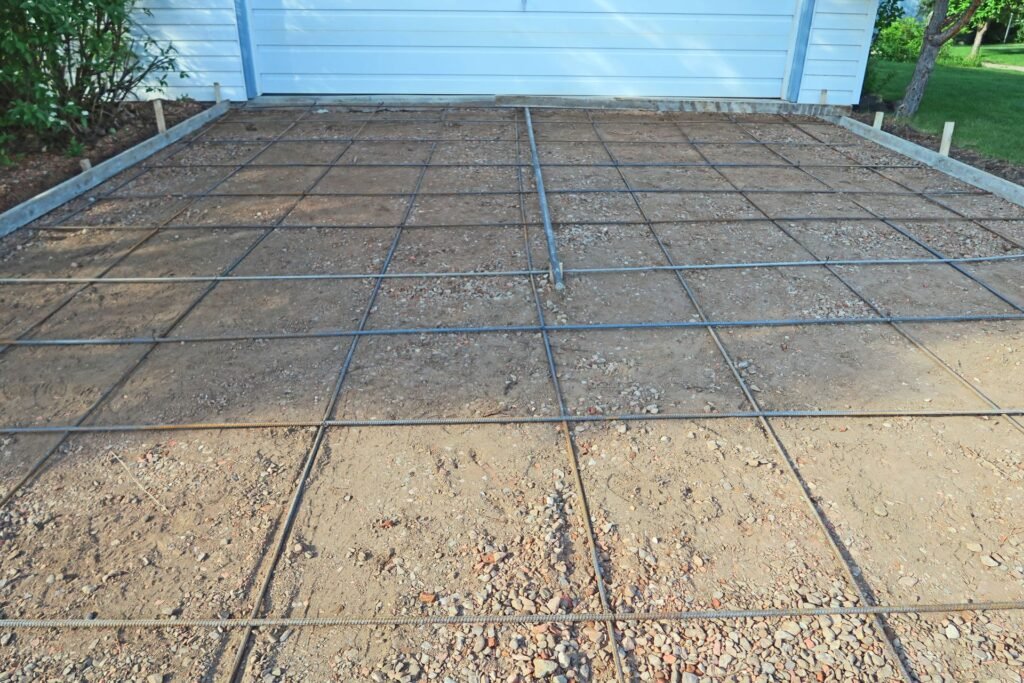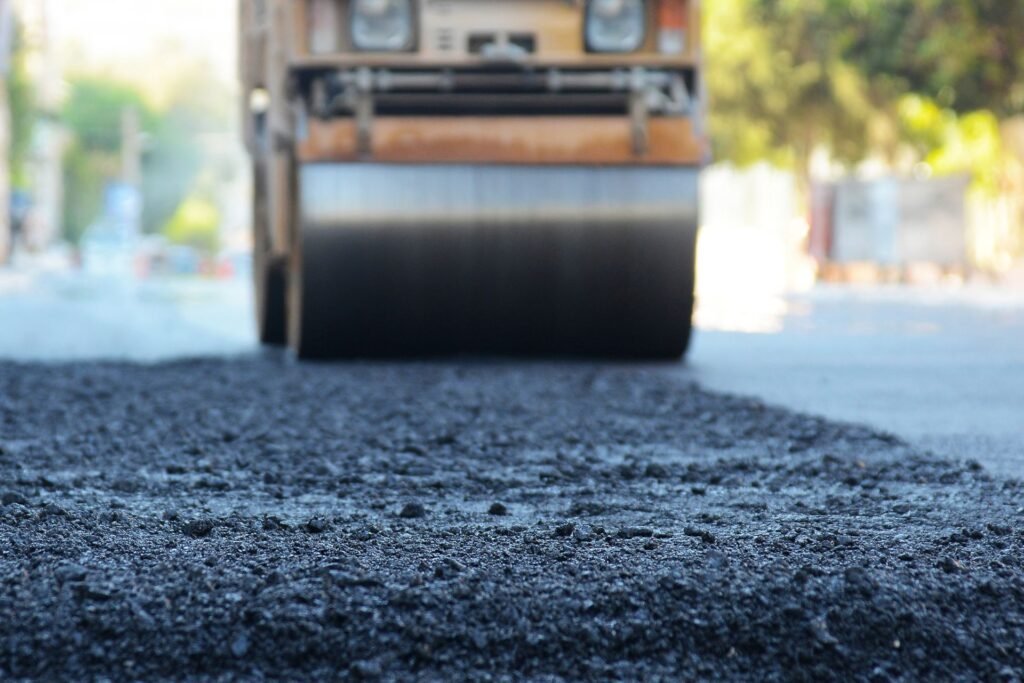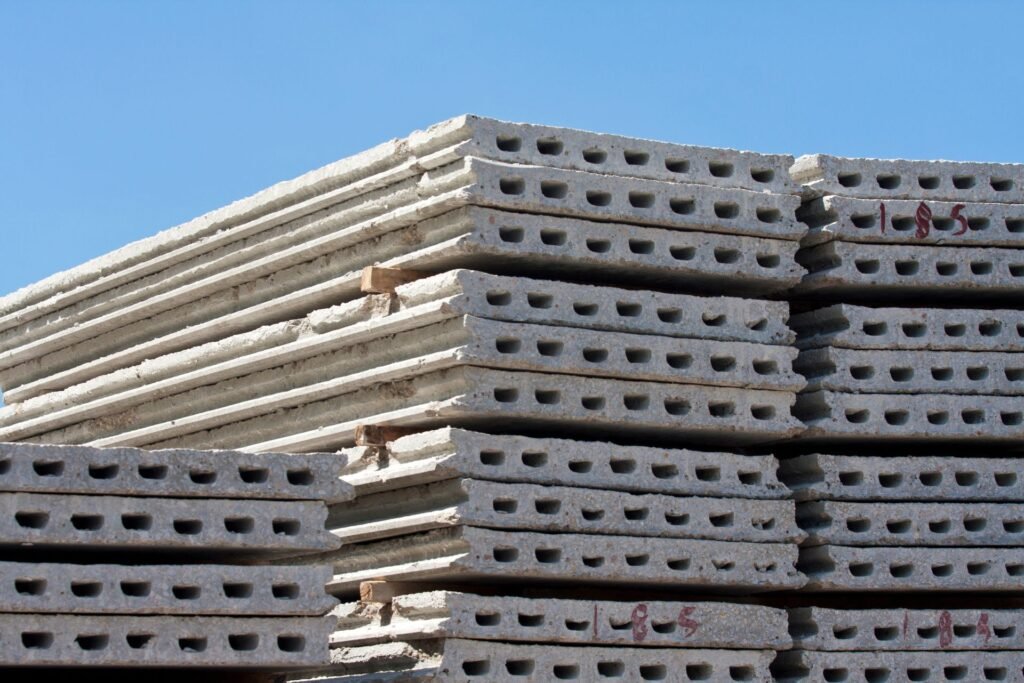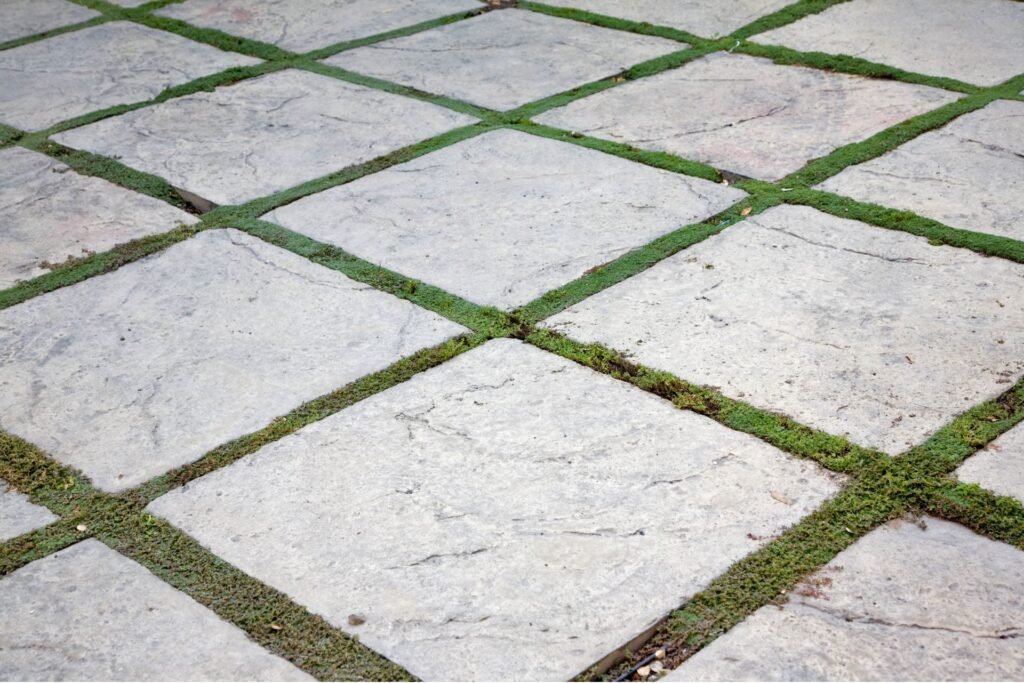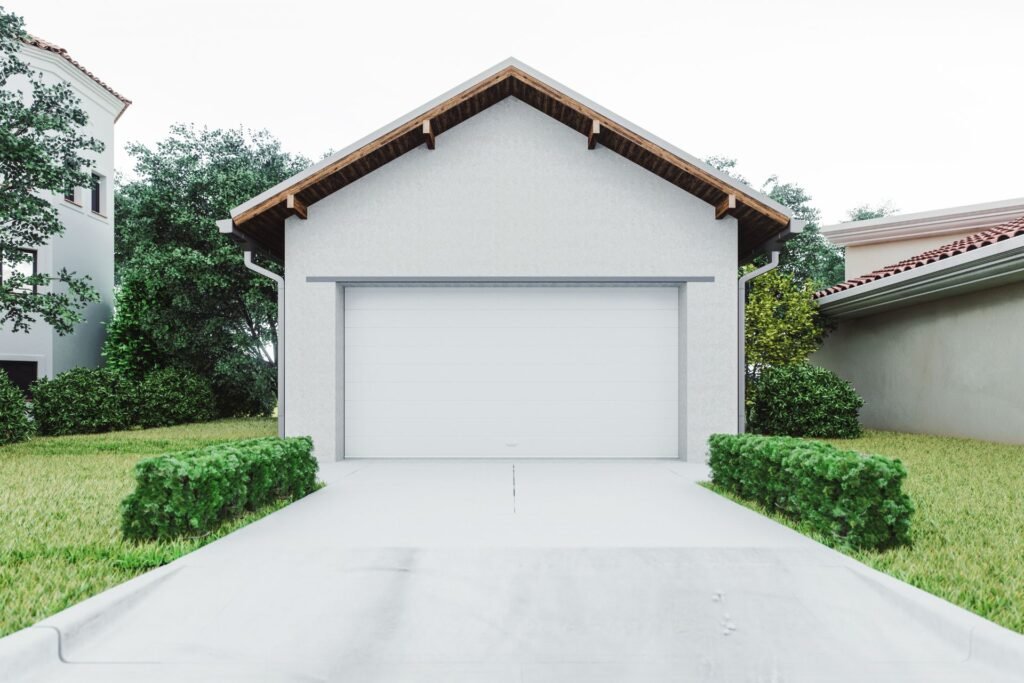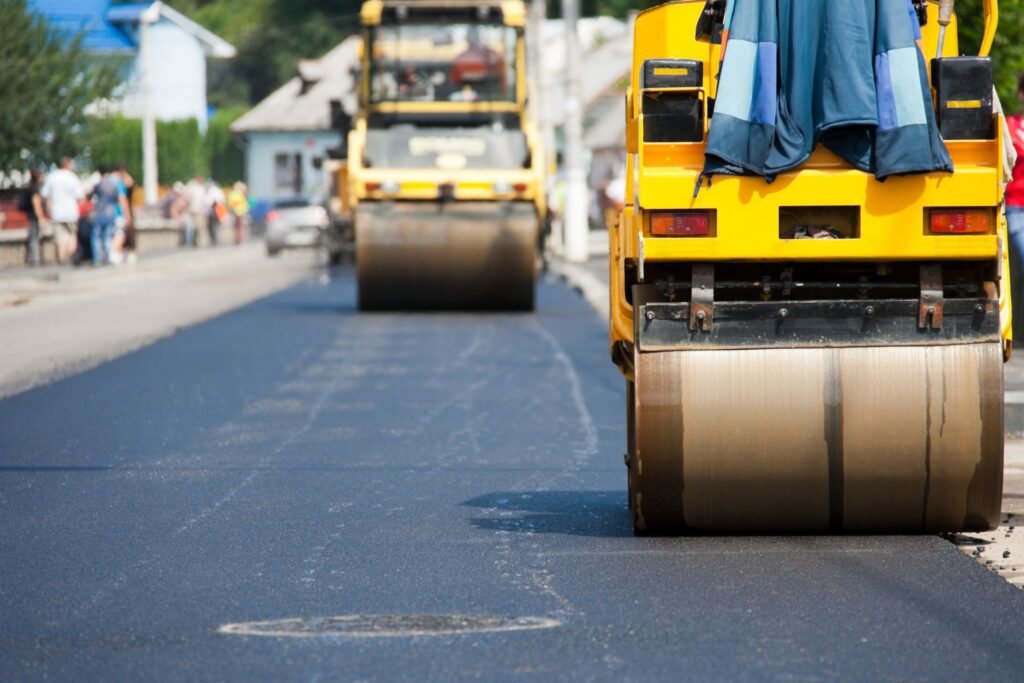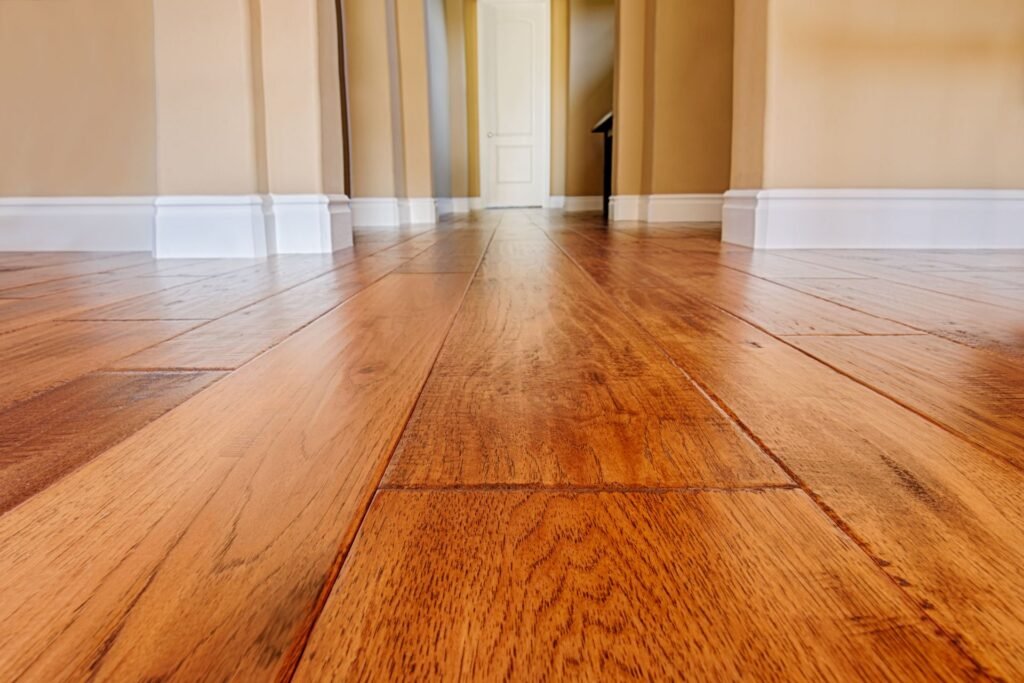Welcome to our comprehensive guide on choosing the best type of reinforcement for residential driveways! Whether you’re planning to build a new driveway or reinforce an existing one, understanding the various reinforcement options available is crucial to ensure durability, longevity, and overall performance. In this blog, we’ll explore different reinforcement methods, including steel rebar, wire mesh, fiber reinforcement, and concrete reinforcement grids, highlighting their advantages, disadvantages, and ideal use cases. Our goal is to equip you with the knowledge needed to make an informed decision that suits your specific needs, enhances the strength of your driveway, and fits your budget. So, let’s dive in and discover which type of reinforcement is best for your residential driveway!
The best type of reinforcement for residential driveways depends on factors like budget, climate, and soil conditions. Steel rebar offers superior strength and durability, ideal for heavy traffic areas. Wire mesh is cost-effective and easy to install, suitable for standard residential use. Fiber reinforcement provides flexibility and crack resistance, making it perfect for varied climates. Concrete reinforcement grids offer uniform support, reducing cracking in expansive soils. Choose the type that best matches your driveway’s specific needs and conditions for optimal performance and longevity.
Table of Contents
Understanding Driveway Reinforcement
Definition of Driveway Reinforcement
Driveway reinforcement refers to the process of strengthening a driveway to ensure its durability and longevity. This is typically achieved by incorporating materials like steel rebar or wire mesh into the concrete. These reinforcing materials help to distribute loads more evenly across the surface, preventing stress concentrations that can lead to cracks and other forms of damage.
Why Reinforcement is Necessary for Residential Driveways
Residential driveways bear the weight of vehicles, which can range from lightweight cars to heavier trucks and RVs. Without adequate reinforcement, the concrete or asphalt is more susceptible to wear and tear. Reinforcement enhances the structural integrity of the driveway, ensuring it can withstand repeated use without significant degradation.
Several reasons underscore the necessity of driveway reinforcement:
1. Load Distribution: Reinforcing materials help to spread the weight of vehicles over a larger area, reducing the pressure on any single point and minimizing the risk of cracking.
2. Preventing Shifts and Settlements: Over time, ground movement and changes in soil conditions can cause unreinforced driveways to shift or settle unevenly. Reinforcement mitigates these effects by providing additional stability.
3. Longevity: A reinforced driveway has a significantly longer lifespan compared to an unreinforced one, offering better value over time.
4. Maintenance Reduction: By preventing common issues like cracks and shifts, reinforced driveways require less frequent repairs, saving homeowners both time and money.
Common Problems Without Proper Reinforcement
When a driveway lacks proper reinforcement, several issues can arise:
1. Cracks: One of the most common problems is cracking. Without reinforcement, the concrete is more likely to develop cracks due to the pressure of vehicles and environmental factors like temperature changes. These cracks not only detract from the driveway’s appearance but can also lead to more serious structural issues if left unaddressed.
2. Shifts and Settlements: Unreinforced driveways are more vulnerable to shifts and settlements caused by soil movement. This can result in an uneven surface, making it difficult to drive on and posing a tripping hazard.
3. Erosion: Water can seep into the cracks and gaps of an unreinforced driveway, leading to erosion of the underlying soil. This can further destabilize the driveway and accelerate the deterioration process.
4. Increased Maintenance Costs: Driveways without proper reinforcement often require more frequent maintenance and repairs. The cost of these repairs can add up over time, making an initially cheaper, unreinforced driveway more expensive in the long run.
By understanding the importance of driveway reinforcement, homeowners can make informed decisions that enhance the durability, safety, and aesthetic appeal of their driveways. Reinforcement not only provides immediate benefits in terms of structural integrity but also ensures long-term performance, making it a worthwhile investment for any residential property.

Types Of Driveway Reinforcement
When constructing a driveway, choosing the right type of reinforcement is crucial for ensuring longevity, durability, and overall performance. Reinforcement helps in distributing loads, preventing cracks, and maintaining the structural integrity of the driveway. Here, we provide an overview of various reinforcement types commonly used in residential driveways and delve into their specific properties, advantages, disadvantages, and ideal use cases.
Steel Rebar
Description and Properties of Steel Rebar
A steel rebar, or reinforcing bar, is a steel bar used to reinforce concrete. It is typically made of carbon steel and is known for its high tensile strength. Rebar is often textured with ridges or deformations to provide better mechanical anchoring in the concrete.
Advantages of Using Steel Rebar
Steel rebar significantly enhances the strength and durability of concrete driveways. It helps distribute loads evenly, reducing the likelihood of cracks and structural failure. The material is highly durable and can withstand heavy traffic and harsh weather conditions, making it a preferred choice for many residential driveways.
Disadvantages of Using Steel Rebar
The primary disadvantage of steel rebar is its cost. It is more expensive compared to other reinforcement options. Additionally, steel rebar is susceptible to corrosion over time, especially if not properly protected or if exposed to moisture, which can lead to rust and subsequent weakening of the concrete structure.
Ideal Scenarios for Using Steel Rebar
Steel rebar is ideal for driveways that will bear heavy loads, such as those frequently used by large vehicles. It is also suitable for areas with harsh weather conditions where additional strength and durability are essential.
Wire Mesh
Description and Properties of Wire Mesh
Wire mesh, also known as welded wire fabric, consists of thin steel wires welded together to form a grid pattern. It is commonly used as a reinforcement in concrete slabs and driveways.
Advantages of Using Wire Mesh
Wire mesh is cost-effective and relatively easy to install compared to steel rebar. It provides sufficient reinforcement for residential driveways, helping to control cracking and improve the tensile strength of the concrete.
Disadvantages of Using Wire Mesh
While wire mesh is useful, it does not offer the same level of strength as steel rebar. It may not be suitable for driveways subjected to extremely heavy loads or high-impact stresses.
Ideal Scenarios for Using Wire Mesh
Wire mesh is suitable for residential driveways that experience moderate traffic and loads. It is a practical choice for homeowners looking for a balance between cost and performance.
Fiber Reinforcement
Description and Properties of Fiber Reinforcement
Fiber reinforcement involves adding small fibers to the concrete mix. These fibers can be made from steel, synthetic materials, glass, or natural materials. The fibers are dispersed throughout the concrete, providing enhanced structural integrity.
Types of Fibers Used
- Steel Fibers: Provide significant strength and are often used in industrial applications.
- Synthetic Fibers: Made from materials like polypropylene, these fibers are resistant to corrosion and provide good durability.
- Glass Fibers: Enhance tensile strength and are resistant to alkali.
- Natural Fibers: Include materials like cellulose, which offer environmental benefits but may have lower performance compared to synthetic options.
Advantages of Using Fiber Reinforcement
Fiber reinforcement helps in reducing shrinkage cracks and improving the overall toughness of the concrete. It provides flexibility and resistance to cracking under stress. Fibers can enhance the longevity and durability of the driveway without significantly increasing the cost.
Disadvantages of Using Fiber Reinforcement
The cost of fiber materials can be higher than traditional reinforcement methods. Additionally, the availability of specific fiber types may vary by region, potentially limiting options.
Ideal Scenarios for Using Fiber Reinforcement
Fiber reinforcement is ideal for driveways that require additional crack resistance and flexibility. It is particularly useful in regions with extreme temperature variations, where concrete expansion and contraction are concerns.
Concrete Reinforcement Grids
Description and Properties of Concrete Reinforcement Grids
Concrete reinforcement grids are pre-fabricated grids made of steel or composite materials. They provide a uniform structure that enhances the strength and integrity of concrete driveways.
Advantages of Using Concrete Reinforcement Grids
These grids offer uniform support across the entire driveway, reducing the likelihood of cracking and structural failure. They are effective in distributing loads evenly and can be tailored to specific driveway designs.
Disadvantages of Using Concrete Reinforcement Grids
The installation of concrete reinforcement grids can be complex and time-consuming. It often requires precise placement and alignment, which may increase labor costs.
Ideal Scenarios for Using Concrete Reinforcement Grids
Concrete reinforcement grids are best suited for high-traffic driveways or those that require a high level of structural integrity. They are also ideal for driveways with complex designs or shapes, where uniform support is essential.
In conclusion, choosing the right type of reinforcement for your driveway depends on various factors, including the expected load, environmental conditions, and budget. By understanding the properties, advantages, and disadvantages of each reinforcement type, homeowners can make informed decisions that ensure the longevity and performance of their driveways.

Comparing The Types Of Reinforcement
When it comes to reinforcing residential driveways, selecting the right type of reinforcement is crucial. It ensures durability, longevity, and the ability to withstand various loads and environmental conditions. Here, we will delve into a comparative analysis of the common types of reinforcement, highlight key factors to consider and provide real-world examples to illustrate their applications.
Comparative Analysis of Reinforcement Types
There are several types of reinforcement commonly used in residential driveways, each with its own set of benefits and drawbacks. Here, we’ll compare three main types: steel rebar, wire mesh, and fiber reinforcement.
Steel Rebar
Steel rebar is one of the most widely used reinforcement types. It’s known for its strength and ability to hold concrete together under tension. Typically, steel rebar comes in various grades and diameters, making it versatile for different applications.
Advantages:
- High tensile strength
- Excellent for heavy load-bearing areas
- Durable and long-lasting
Disadvantages:
- More expensive compared to other options
- Can corrode if not properly protected
Wire Mesh
Wire mesh, also known as welded wire fabric (WWF), is another popular reinforcement type. It consists of intersecting wires welded together to form a grid. Wire mesh is often used in residential driveways for its ease of installation and cost-effectiveness.
Advantages:
- Cost-effective
- Easy to install
- Provides adequate reinforcement for light to moderate loads
Disadvantages:
- Less strength compared to steel rebar
- Can be difficult to position correctly during installation
Fiber Reinforcement
Fiber reinforcement involves mixing fibers (typically made of steel, glass, synthetic materials, or natural fibers) directly into the concrete mix. This method enhances the concrete’s overall durability and resistance to cracking.
Advantages:
- Improves resistance to cracking and shrinkage
- Distributes stress throughout the concrete
- Low maintenance
Disadvantages:
- Can be less effective for heavy loads
- Limited tensile strength compared to rebar and mesh
Factors to Consider When Choosing Reinforcement
Selecting the appropriate reinforcement type for your driveway depends on various factors, including climate, soil type, and driveway usage.
Climate
In regions with extreme weather conditions, such as frequent freeze-thaw cycles, steel rebar or fiber reinforcement may be more suitable due to their superior strength and crack resistance.
Soil Type
The type of soil underlying your driveway can significantly impact its stability. For areas with unstable or expansive soils, steel rebar provides additional structural integrity.
Driveway Usage
Consider the typical usage of your driveway. For driveways that accommodate heavy vehicles or frequent traffic, steel rebar is recommended. For light to moderate usage, wire mesh or fiber reinforcement may suffice.
Case Studies and Examples
To illustrate the practical application of these reinforcement types, let’s look at a few case studies:
Case Study 1: Suburban Driveway with Heavy Traffic
In a suburban neighborhood with a high volume of vehicle traffic, a homeowner opted for steel rebar reinforcement. The driveway, measuring 20 feet by 40 feet, was subject to frequent use by cars, trucks, and delivery vehicles. Steel rebar was chosen for its superior tensile strength and ability to withstand heavy loads. After ten years, the driveway remains in excellent condition with minimal cracking.
Case Study 2: Rural Driveway with Moderate Usage
A rural homeowner with a smaller driveway (15 feet by 30 feet) chose wire mesh reinforcement. The driveway primarily supports personal vehicles and occasional farm equipment. The wire mesh provided adequate support and was cost-effective. After five years, the driveway shows only minor wear and tear, demonstrating the suitability of wire mesh for moderate usage.
Case Study 3: Coastal Driveway with Extreme Weather
In a coastal area prone to high humidity and salt exposure, the homeowner selected fiber reinforcement for their driveway. The fibers, mixed directly into the concrete, enhanced the driveway’s resistance to cracking and corrosion. Despite the harsh coastal conditions, the driveway has maintained its integrity over seven years, showcasing the effectiveness of fiber reinforcement in challenging environments.
Choosing the right type of reinforcement for your residential driveway is a critical decision that impacts its durability and longevity. By considering factors such as climate, soil type, and usage, and understanding the benefits and drawbacks of each reinforcement type, homeowners can make informed choices that ensure their driveways remain strong and resilient for years to come.

Installation Process Of Each Reinforcement Type
Step-by-Step Guide for Installing Each Type of Reinforcement
When it comes to reinforcing your residential driveway, choosing the right type of reinforcement and installing it correctly is crucial for durability and longevity. Here’s a detailed step-by-step guide for the most common types of reinforcement: steel rebar, wire mesh, and fiber reinforcement.
Steel Rebar Installation
1. Planning and Preparation
- Start by determining the design and layout of your driveway. Measure the area and calculate the amount of rebar needed.
- Clear the driveway area of debris and vegetation. Ensure the ground is level and compacted.
2. Laying the Rebar
- Cut the rebar to the required lengths using a rebar cutter.
- Lay the rebar in a grid pattern, typically spacing them 12 inches apart, both horizontally and vertically.
- Use rebar chairs to elevate the rebar grid off the ground, ensuring it is positioned in the middle of the concrete slab for optimal strength.
3. Securing the Rebar
- Tie the intersections of the rebar grid with wire ties to keep them in place.
- Double-check the grid spacing and ensure the rebar is secure and elevated correctly.
4. Pouring the Concrete
- Pour the concrete over the rebar grid, ensuring it is evenly distributed.
- Use a concrete vibrator to remove air pockets and ensure the concrete fully encapsulates the rebar.
Wire Mesh Installation
1. Preparation
- Measure the driveway area and purchase the appropriate amount of wire mesh.
- Prepare the ground by clearing it of debris and ensuring it is level.
2. Cutting and Placing the Mesh
- Cut the wire mesh to fit the driveway dimensions.
- Lay the mesh on the prepared ground, overlapping any joints by at least one grid square.
3. Securing the Mesh
- Use wire ties or clips to secure the mesh at the overlaps.
- Ensure the mesh is elevated using chairs or supports to position it in the center of the concrete slab.
4. Concrete Pouring:
- Pour the concrete over the wire mesh, spreading it evenly.
- Use a concrete vibrator to eliminate air pockets and ensure proper coverage of the mesh.
Fiber Reinforcement Installation
1. Mixing the Concrete
- Fiber reinforcement is mixed directly into the concrete. Determine the amount of fiber needed based on the manufacturer’s recommendations.
- Add the fiber reinforcement to the concrete mix, ensuring it is evenly distributed.
2. Pouring the Concrete
- Pour the fiber-reinforced concrete onto the prepared driveway area.
- Use standard concrete pouring techniques, ensuring the mix is spread evenly.
3. Finishing the Surface
- Smooth and finish the concrete surface as usual.
- Allow the concrete to cure according to standard procedures.
Tips and Best Practices for Homeowners and Contractors
- Consistency in Preparation: Proper ground preparation is key to preventing future cracks and ensuring the longevity of the driveway.
- Correct Elevation: Ensure rebar and mesh are correctly positioned in the middle of the slab, not at the bottom.
- Proper Mixing: For fiber reinforcement, ensure fibers are evenly mixed to avoid clumping.
- Use of Vibrators: Always use a concrete vibrator to remove air pockets and ensure full encapsulation of reinforcement.
Common Mistakes to Avoid During Installation
- Inadequate Preparation: Skimping on ground preparation can lead to uneven settling and cracks.
- Incorrect Spacing: Improper spacing of rebar or mesh can compromise the structural integrity of the driveway.
- Insufficient Tying: Not securing the rebar or mesh adequately can lead to movement during the concrete pour, reducing effectiveness.
- Poor Mixing: For fiber reinforcement, failing to mix the fibers thoroughly can lead to weak spots in the concrete.
By following these detailed steps and tips, homeowners and contractors can ensure a durable and long-lasting reinforced driveway. Avoiding common mistakes during the installation process will save time and resources in the long run.

Maintenance And Longevity
When it comes to maintaining and ensuring the longevity of your driveway, understanding how different reinforcement types impact its durability is crucial. Here’s a detailed look into how various reinforcement materials influence the lifespan of a driveway, essential maintenance tips, and signs that indicate your driveway may need attention or repair.
How Different Reinforcement Types Impact the Longevity of a Driveway
Reinforcement plays a pivotal role in extending the lifespan of a driveway. Different materials offer varying levels of durability and protection against wear and tear:
1. Steel Rebar: Steel rebar is one of the most common reinforcement materials. It provides excellent tensile strength, helping to prevent cracks and distribute loads evenly. A driveway reinforced with steel rebar can last several decades if maintained properly, as it is highly resistant to the stresses caused by heavy vehicles and temperature fluctuations.
2. Wire Mesh: Wire mesh, typically made of steel, is another popular reinforcement option. It offers a good balance of strength and flexibility, making it suitable for driveways that experience moderate traffic. While not as robust as rebar, wire mesh still significantly enhances the driveway’s durability and can prolong its life by minimizing cracking and shifting.
3. Synthetic Fibers: Synthetic fiber reinforcement, such as polypropylene fibers, is increasingly being used in driveway construction. These fibers help to control plastic shrinkage cracks and improve the overall toughness of the concrete. While not as strong as steel, synthetic fibers add an extra layer of protection, particularly useful for residential driveways with lighter loads.
4. Glass Fiber Reinforced Polymer (GFRP): GFRP is a newer, innovative reinforcement material that offers high tensile strength and corrosion resistance. It’s lightweight and non-conductive, making it an excellent choice for driveways exposed to harsh environmental conditions. GFRP can significantly extend the lifespan of a driveway by reducing the risk of corrosion and associated damage.
Maintenance Tips for Reinforced Driveways
Regular maintenance is key to maximizing the longevity of a reinforced driveway. Here are some practical tips to keep your driveway in top condition:
1. Seal the Surface: Applying a concrete sealer every few years can protect the driveway from moisture, chemicals, and UV damage. Sealing helps to prevent surface cracks and prolongs the life of the reinforcement.
2. Clean Regularly: Keep the driveway clean by removing debris, leaves, and stains. Regular cleaning prevents the buildup of materials that can cause wear and tear or lead to chemical reactions with the concrete.
3. Address Cracks Promptly: Even with reinforcement, small cracks can develop over time. Repair any cracks as soon as they appear to prevent them from expanding and causing more significant damage.
4. Control Vegetation: Roots from nearby trees and plants can grow under the driveway, causing cracks and lifting. Trim back vegetation and consider root barriers to protect the integrity of the driveway.
5. Avoid Heavy Loads: While reinforced driveways can handle more weight, consistently parking heavy vehicles or equipment can lead to stress and potential damage. Distribute the weight evenly or use protective mats to minimize impact.
Signs That Your Driveway Reinforcement Needs Attention or Repair
It’s important to recognize the early signs that your driveway may need repair or reinforcement attention. Here are some common indicators:
1. Visible Cracks: While small cracks can be normal, large or rapidly growing cracks may indicate underlying issues with the reinforcement.
2. Uneven Surface: If sections of your driveway become uneven or sunken, it could be a sign that the reinforcement is failing or the subbase is eroding.
3. Rust Stains: Rust stains on the surface can indicate that steel reinforcement is corroding. This can compromise the strength of the driveway and should be addressed immediately.
4. Potholes: The formation of potholes can be a sign of significant wear and damage. These should be repaired promptly to prevent further deterioration.
5. Water Pooling: Persistent water pooling on the driveway surface can suggest drainage issues or low spots, which can lead to reinforcement damage if not corrected.
By understanding the impact of different reinforcement types, implementing regular maintenance, and being vigilant about signs of damage, you can ensure your driveway remains durable and long-lasting. Proper care and timely repairs will not only enhance the appearance of your driveway but also extend its functional life, providing a safe and stable surface for years to come.

Cost Considerations
When it comes to reinforcing residential driveways, understanding the costs involved is crucial for homeowners. Here’s a comprehensive breakdown to help you make an informed decision.
Cost Breakdown of Each Reinforcement Type
1. Steel Reinforcement (Rebar)
- Material Costs: Rebar is one of the most common types of reinforcement used in concrete driveways. The cost of rebar can range from $0.75 to $1.25 per square foot, depending on the thickness and grade.
- Installation Costs: Installing rebar requires skilled labor. The labor costs can add another $1.00 to $2.00 per square foot.
- Total Cost: On average, homeowners can expect to pay between $1.75 to $3.25 per square foot for rebar reinforcement.
2. Wire Mesh
- Material Costs: Wire mesh is another popular option, especially for smaller projects. The material costs for wire mesh typically range from $0.40 to $0.60 per square foot.
- Installation Costs: The installation of wire mesh is generally less labor-intensive compared to rebar, adding around $0.50 to $1.00 per square foot.
- Total Cost: The total cost for wire mesh reinforcement usually falls between $0.90 to $1.60 per square foot.
3. Fiber Reinforcement
- Material Costs: Fiber reinforcement involves mixing synthetic fibers into the concrete mix. The cost for fiber reinforcement can vary widely but generally ranges from $0.15 to $0.30 per square foot.
- Installation Costs: Since fibers are mixed directly into the concrete, there are no additional labor costs for installation.
- Total Cost: Homeowners can expect to pay between $0.15 to $0.30 per square foot for fiber reinforcement.
Long-term Cost vs. Initial Investment
Investing in the right type of reinforcement can significantly impact the long-term costs associated with maintaining your driveway. Here’s a closer look at the long-term cost implications:
- Steel Reinforcement (Rebar): Although rebar has a higher initial cost, it provides superior strength and durability. This can reduce the frequency and cost of repairs over the lifespan of the driveway, making it a cost-effective choice in the long run.
- Wire Mesh: Wire mesh is cheaper initially but may not provide the same level of long-term durability as rebar. This could lead to higher maintenance costs over time.
- Fiber Reinforcement: Fiber reinforcement has the lowest initial cost and can effectively prevent minor cracks and shrinkage. However, it may not offer the same structural support as rebar or wire mesh, potentially leading to higher long-term repair costs for major damage.
Budgeting Tips for Homeowners
To ensure you stay within your budget while choosing the best reinforcement for your driveway, consider the following tips:
1. Get Multiple Quotes: Contact several contractors to get detailed quotes for both materials and labor. This will give you a better understanding of the market rates and help you find the best deal.
2. Consider DIY Options: For smaller projects, consider doing some of the work yourself to save on labor costs. However, be sure to only take on tasks that you’re confident you can complete successfully.
3. Plan for the Future: Think about the long-term maintenance costs and choose a reinforcement type that offers the best balance between initial cost and long-term durability.
4. Negotiate: Don’t hesitate to negotiate with contractors. They might offer discounts for larger projects or if you can be flexible with the timing.
5. Financing Options: Look into financing options if the upfront costs are a concern. Many contractors offer payment plans that can make the initial investment more manageable.
By carefully considering the costs, long-term benefits, and budgeting tips, you can make a well-informed decision that will ensure your driveway remains strong and durable for years to come.
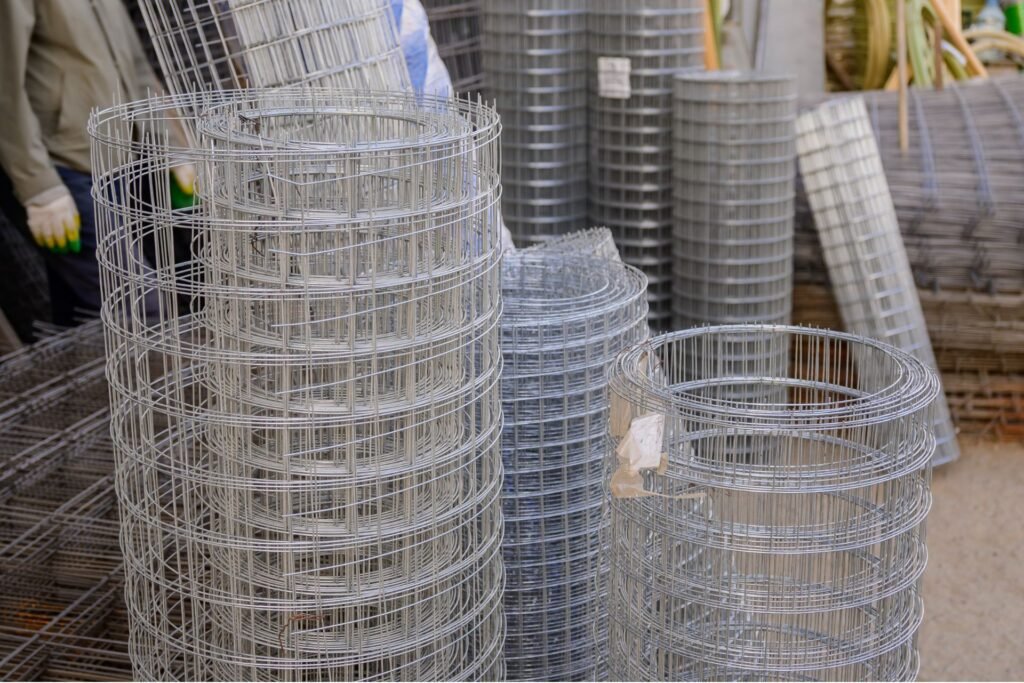
Expert Opinions And Recommendations
Insights from Contractors and Industry Experts
When it comes to making informed decisions about your home, insights from experienced contractors and industry experts are invaluable. These professionals bring a wealth of knowledge and firsthand experience that can guide you through complex projects, ensuring quality results and efficient use of resources. Contractors, with years of hands-on experience, can offer practical advice on everything from selecting the right materials to managing unexpected challenges that arise during construction or renovation. Industry experts, such as architects and engineers, provide a broader perspective, incorporating the latest trends and technological advancements into their recommendations. Their insights help you stay ahead of the curve, adopting innovative solutions that enhance both the functionality and aesthetic appeal of your home.
Real-life Testimonials and Reviews from Homeowners
Hearing directly from homeowners who have undergone similar projects provides a relatable and realistic perspective. Real-life testimonials and reviews offer a glimpse into the experiences of others, highlighting both the successes and the potential pitfalls to avoid. These firsthand accounts are incredibly valuable, as they can reveal the true impact of various decisions and help set realistic expectations. Homeowners often share detailed feedback on the performance of contractors, the quality of materials used, and the overall satisfaction with the project outcome. Such reviews can be a goldmine of information, helping you make more informed choices and avoid common mistakes. Additionally, they can provide reassurance, knowing that others have successfully navigated similar challenges and achieved their desired results.
Recommendations for Specific Scenarios
Every home project is unique, with its own set of requirements and challenges. Therefore, expert recommendations tailored to specific scenarios are crucial. Whether you’re dealing with a small renovation or a major construction project, having customized advice can make a significant difference. For instance, experts might recommend certain materials for areas prone to moisture or suggest design elements that maximize space and light in smaller rooms. They might also provide guidance on energy-efficient solutions, helping you reduce long-term costs and environmental impact. By considering the unique aspects of your project, experts can offer targeted recommendations that align with your goals, budget, and lifestyle. This tailored advice ensures that you not only achieve the best possible outcome but also enjoy a smoother and more efficient process from start to finish.
Incorporating expert opinions and recommendations into your planning process can significantly enhance the success of your home projects. By leveraging the insights of seasoned professionals, learning from the experiences of other homeowners, and applying tailored advice to your specific situation, you can navigate the complexities of home improvement with confidence and clarity.

FAQs: About Which Type Of Reinforcement Is Best For Residential Driveways
What is driveway reinforcement and why is it important?
Driveway reinforcement involves adding materials like steel rebar, wire mesh, or fibers to the concrete mix or structure to enhance its strength and durability. It is crucial because it helps prevent common issues like cracking, shifting, and deterioration, ensuring a longer-lasting and more reliable driveway.
How does steel rebar reinforcement work?
Steel rebar reinforcement works by providing tensile strength to the concrete. When embedded in the concrete, the steel bars distribute loads more evenly and help prevent cracks from spreading. This makes the driveway more durable and capable of handling heavy loads and traffic.
What are the benefits of using wire mesh for driveway reinforcement?
Wire mesh reinforcement is cost-effective and easy to install. It provides adequate support for standard residential driveways, helping to prevent cracks and improve the overall strength of the concrete. Wire mesh is also less expensive than steel rebar, making it a popular choice for many homeowners.
What types of fibers are used in fiber reinforcement, and how do they work?
Fiber reinforcement can include steel fibers, synthetic fibers, glass fibers, or natural fibers. These fibers are mixed into the concrete and help to improve its flexibility, crack resistance, and overall strength. The fibers create a more uniform structure, reducing the likelihood of cracks forming and spreading.
When should concrete reinforcement grids be used?
Concrete reinforcement grids should be used in areas with expansive soils or where uniform support is needed to reduce cracking. They provide a strong, evenly distributed reinforcement that helps maintain the integrity of the driveway in challenging soil conditions.
How do you choose the best type of reinforcement for your driveway?
Choosing the best type of reinforcement depends on factors such as the local climate, soil type, driveway usage, and budget. Steel rebar is ideal for heavy traffic and high-stress areas, wire mesh is suitable for standard residential use, fiber reinforcement is great for varied climates, and concrete grids are perfect for expansive soils.
What are the installation steps for each type of reinforcement?
Steel Rebar: Lay out rebar in a grid pattern, ensuring it is elevated to be positioned in the middle of the concrete slab.
Wire Mesh: Unroll the mesh and place it over the area to be poured, securing it with supports to keep it in the center of the slab.
Fiber Reinforcement: Mix fibers into the concrete before pouring.
Concrete Reinforcement Grids: Lay the grids flat over the prepared base and secure them as needed.
What maintenance is required for reinforced driveways?
Regular maintenance for reinforced driveways includes sealing the surface every few years, cleaning to remove debris and prevent staining, and inspecting for cracks or damage. Promptly repairing any issues can help extend the life of the driveway.
How much does each type of driveway reinforcement cost?
The cost varies based on the material and project size:
Steel Rebar: Typically more expensive due to material and labor costs.
Wire Mesh: Generally more affordable and easier to install.
Fiber Reinforcement: The cost depends on the type of fibers used.
Concrete Grids: Can be costly due to material and installation complexity.
Are there any drawbacks to using driveway reinforcement?
Each type of reinforcement has its drawbacks:
Steel Rebar: This can be prone to corrosion if not properly installed or maintained.
Wire Mesh: Offers less tensile strength compared to rebar.
Fiber Reinforcement: Higher cost and may not be readily available.
Concrete Grids: Complex installation and higher initial cost.
Conclusion
In conclusion, we’ve covered the crucial aspects of retaining walls, from their importance in landscape stability to the different materials and designs available in New Zealand. We also discussed the costs involved, potential challenges, and the necessity of proper drainage systems. Based on these insights, our final recommendation is to carefully consider your specific needs, budget, and aesthetic preferences when planning your retaining wall project. It’s essential to consult with professionals who can provide expert advice tailored to your unique situation, ensuring a durable and visually appealing outcome. By doing so, homeowners can make informed decisions that enhance their property’s value and functionality.
About the Author:
Mike Veail is a recognized digital marketing expert with over 6 years of experience in helping tradespeople and small businesses thrive online. A former quantity surveyor, Mike combines deep industry knowledge with hands-on expertise in SEO and Google Ads. His marketing strategies are tailored to the specific needs of the trades sector, helping businesses increase visibility and generate more leads through proven, ethical methods.
Mike has successfully partnered with numerous companies, establishing a track record of delivering measurable results. His work has been featured across various platforms that showcase his expertise in lead generation and online marketing for the trades sector.
Learn more about Mike's experience and services at https://theleadguy.online or follow him on social media:

